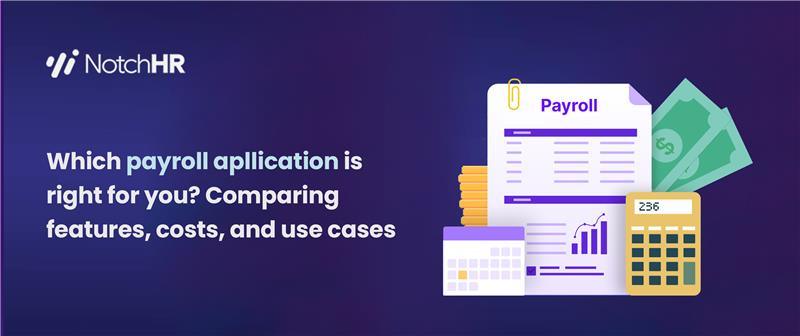When evaluating employee performance, the debate between Performance Reviews vs Performance Management is crucial. Traditional reviews often leave employees feeling undervalued, with 59% of workers stating they have no impact on their performance. This raises an important question: Is performance management a better alternative? Exploring the differences between Performance Reviews vs Performance Management reveals more than just semantics; it showcases how businesses can better engage employees and boost productivity. Whether you’re an HR professional or a manager, understanding these distinctions will help create a more dynamic work environment.
In this blog post, we’ll dive into the debate between Performance Reviews vs Performance Management. We’ll learn about their differences, weigh their pros and cons, and also determine which approach holds more value for today’s dynamic work environments. Whether you’re an HR professional, a manager, or an employee, understanding these concepts can help you create a more productive and engaging workplace.
Understanding Performance Reviews
Definition
Performance reviews are formal assessments where managers evaluate an employee’s work over a specific time. They include self-assessments, manager evaluations, and peer reviews. Only 5% of managers are happy with traditional performance management reviews.
Purpose
Reviews offer feedback, identify areas for improvement, and recognize accomplishments. The aim is to align individual performance with organizational goals.
Pros and Cons
Pros:
- Structured Feedback: Ensures formal feedback channels.
- Documentation: Creates a record of performance for future decisions.
- Goal Setting: Establishes clear, measurable targets for the next review.
Cons:
- Infrequency: Often annual, leading to outdated feedback.
- Stressful: Can induce anxiety, decreasing morale.
- Bias: Prone to subjectivity from the manager.
Common Practices
Performance reviews are typically conducted annually or semi-annually. They often include a combination of self-assessment, manager evaluation, and sometimes peer reviews. The process usually culminates in a meeting where the manager and employee discuss the evaluation, set goals, and create development plans.
Understanding Performance Management
Definition
Performance management is a continuous process that involves planning, monitoring, and reviewing an employee’s work objectives and overall contribution to the organization. Unlike periodic performance reviews, performance management is an ongoing activity that integrates seamlessly into the daily workflow.
Purpose
The primary goal of performance management is to create continuous improvement and development. It aims to align individual performance with the strategic goals of the organization, ensuring that employees are consistently working towards the company’s objectives while also focusing on their personal growth and development.
Pros and Cons
Pros:
- Continuous Feedback: Enables real-time improvements.
- Development Focus: Prioritizes employee growth.
- Engagement: Encourages ongoing dialogue between managers and employees.
Cons:
- Time-Consuming: Requires considerable investment from both parties.
- Consistency: Challenging to maintain uniformity.
- Implementation: Difficult without the right tools and training.
Key Components
- Goal Setting: Establishing clear, measurable objectives that align with organizational goals.
- Continuous Feedback: Providing regular, constructive feedback to help employees improve and grow.
- Development Plans: Creating personalized development plans to support employee growth and career progression.
- Performance Monitoring: Regularly tracking and assessing performance to ensure alignment with goals.
- Recognition and Rewards: Acknowledging and rewarding employees for their contributions and achievements.
“Performance management involves embracing employees’ strengths and being open to innovative ideas – even ones that change the status quo.” – Steve Jobs, Co-founder, Apple Inc.
Comparing Performance Reviews vs Performance Management
Scope
Performance Reviews: Typically focus on evaluating past performance over a specific period, often annually or semi-annually. They are more retrospective, looking back at what has been accomplished and identifying areas for improvement.
Performance Management: Encompasses a broader scope, integrating goal setting, continuous feedback, and development into the daily workflow. It is forward-looking, aiming to foster ongoing improvement and alignment with organizational goals.
Frequency
Performance Reviews: Typically annual, resulting in outdated feedback.
Performance Management: Ongoing, real-time feedback ensures timely improvements.
Impact on Employees
Performance Reviews: This can be stressful and anxiety-inducing for employees, especially if the feedback is negative or unexpected. The infrequent nature of reviews can also lead to a lack of engagement and motivation.
Performance Management: Encourages a culture of continuous improvement and open communication. Regular feedback helps employees feel supported and valued, leading to higher engagement, motivation, and job satisfaction.
Organizational Benefits
Performance Reviews: Provide a formal record of employee performance, which can be useful for making decisions about promotions, raises, and disciplinary actions. However, their limited frequency can reduce their overall effectiveness.
Performance Management: Offers a more holistic approach to managing performance, aligning individual goals with organizational objectives. This continuous process helps organizations adapt to changing business needs, improve employee performance, and achieve better overall results.
“Google has implemented a robust performance management system that includes regular check-ins, real-time feedback, and development plans” – HR Cloud
Which Is More Important?
The relevance of Performance Reviews vs Performance Management depends on the organization’s goals. While performance reviews may work for some, continuous management is often more effective in dynamic environments. A hybrid approach can balance the benefits of both systems, leading to higher employee satisfaction and organizational success.
Case Studies/Examples
Example 1: Tech Industry
In fast-paced tech companies, continuous performance management is often more effective. For instance, Google has implemented a robust performance management system that includes regular check-ins, real-time feedback, and development plans. This approach helps them stay agile and responsive to rapid changes in the industry.
Example 2: Traditional Manufacturing
In more traditional industries like manufacturing, annual performance reviews might still hold significant value. Companies like General Electric have historically relied on structured performance reviews to maintain high standards and ensure consistent quality across their operations.
Expert Opinions
HR experts and industry leaders often emphasize the benefits of a blended approach. According to Josh Bersin, a renowned HR analyst, “Organizations that combine regular performance management practices with periodic performance reviews tend to see the best results. This hybrid model ensures continuous improvement while still providing formal documentation and structure.”
Conclusion
In the debate between Performance Reviews vs Performance Management, it’s clear that both have their merits. However, the key to maximizing employee performance and engagement lies in finding the right balance. By integrating the structured feedback of performance reviews with the continuous development focus of performance management, organizations can create a more dynamic and supportive work environment.
Ready to revolutionize your approach to performance management? Discover how NotchHR can transform your organization’s performance management process. NotchHR offers a comprehensive suite of features designed to enhance productivity and drive growth:
- Actionable Insights: Identify areas for improvement and recognize outstanding contributions with data-driven insights.
- Customized Assessment Cycles: Regularly evaluate performance, track progress, and set clear improvement goals tailored to your organization’s needs.
- Real-Time Dashboards: Monitor employee engagement, satisfaction, and productivity with intuitive, real-time dashboards and reports.
- Versatile Feedback System: Utilize self-evaluations, peer reviews, and managerial assessments to gain a well-rounded perspective on employee performance.
- Tailored Performance Evaluations: Create and customize multiple performance reviews cycles specific to each team’s goals and responsibilities.
Join the growing number of businesses that trust NotchHR to streamline their performance management processes. It doesn’t matter whether you’re a small startup or a large enterprise, NotchHR has the tools you need to foster continuous improvement and achieve your organizational goals. Learn more and schedule a free demo today.




